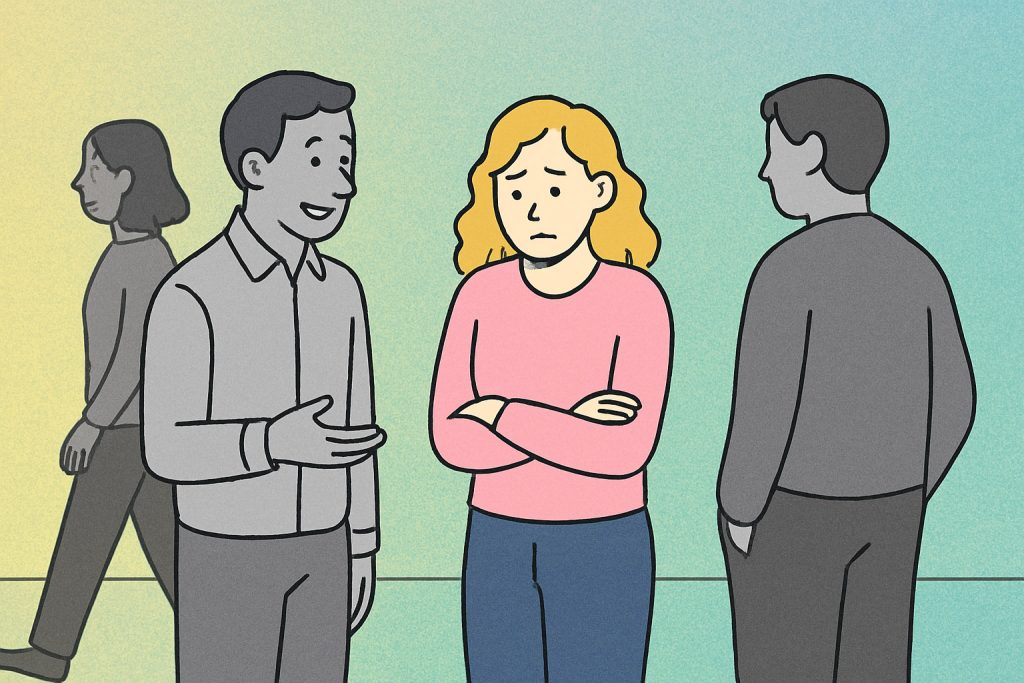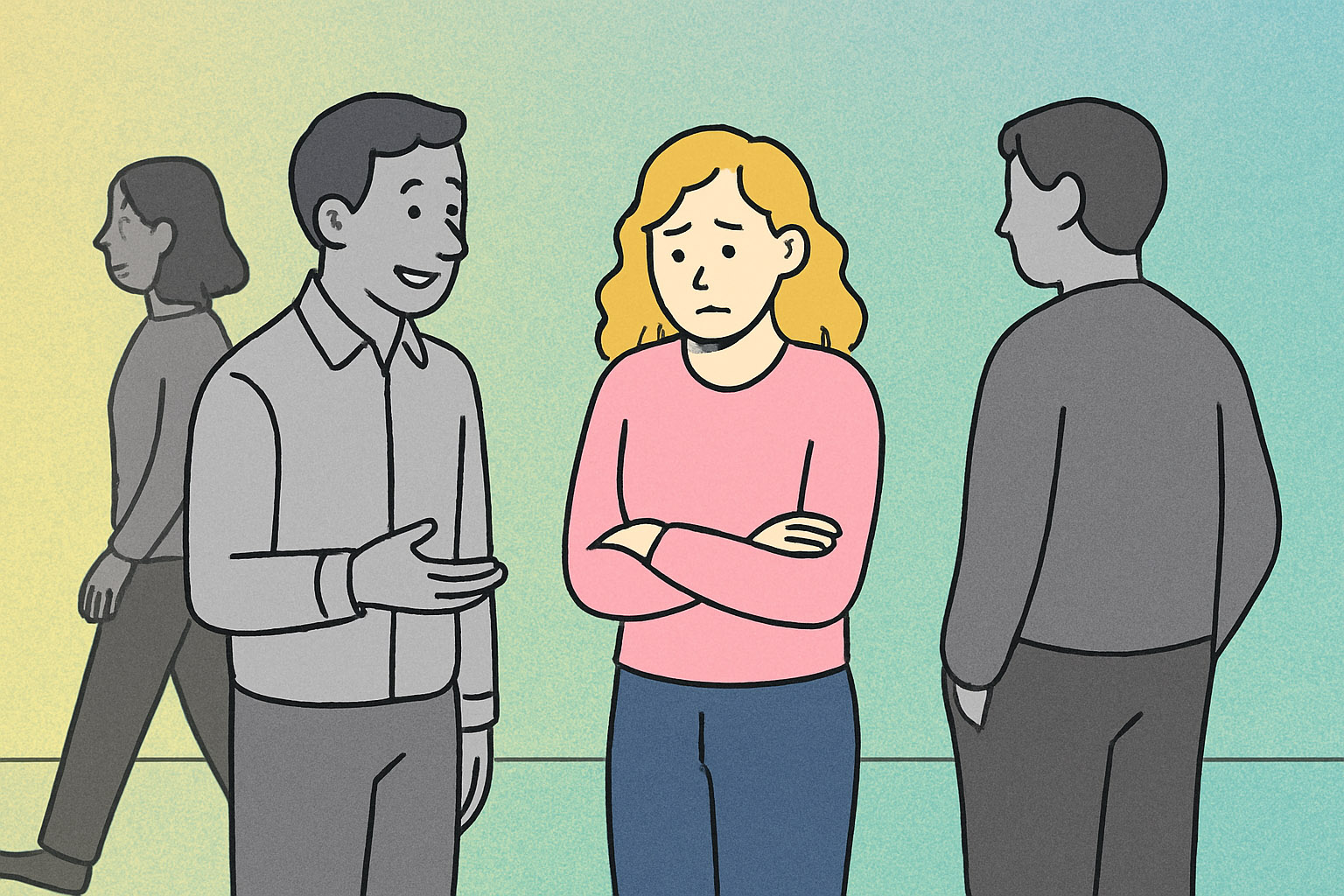Opinions on social safety and inappropriate behaviour vary. For some, it is a new topic, while others experience discrimination daily. To keep the conversation constructive, this blog responds to common comments and debunks myths and misunderstandings.
I don’t think social safety is important.
Social safety means that everyone feels respected, feel free to move, have equal opportunity to express themselves, and reach their full potential. This makes society, organizations, and public spaces more respectful and inclusive for everyone, including you.
If you have never experienced harassment, you may not notice it often or hear about it and it therefore might not seem important. However, for people who experience harassment, social safety is critical to their well-being, productivity and even personal and professional development. As an active bystander, you can help prevent and stop such behavior. This way, we make every space safer and create room for those who feel excluded or unheard.
Women and girls wearing short skirts are asking for it.
Wearing a certain outfit or looking a certain way has nothing to do with how one person should treat another a certain way. No one asks to be intimidated or harassed. Everyone deserves to be treated with respect, even if you don’t agree with their clothing choices.
This way of thinking—saying someone is “asking for it”—is called victim blaming. It means placing the blame for sexual harassment or violence on the person who experiences it. Even if done unintentionally, victim blaming has a large negative impact. Research shows that developing post-traumatic stress disorder (PTSD) after sexual violence is more often linked to victim blaming than to the incident itself. Sadly, 75% of victims of sexual harassment experience victim blaming.
It’s normal for men and boys to behave inappropriately.
Everyone is responsible for their own behavior, regardless of gender. Everyone has the right to be treated with respect. Problematic behavior—such as harassing, insulting, or intimidating others in public spaces—often happens due to group dynamics, peer pressure and the fear of not fitting in. However, this is no excuse for taking part in such behavior.
If you witness this behavior, remember that it is harmful and, in some cases, even illegal. Starting a conversation about it can be difficult, but our 5D method can help. Learn more about what you can do as a bystander.
But it’s just a compliment!
You might have intended to give someone a compliment, but if it is received as unwanted, it’s important to consider how the other person feels. The impact of your words matters more than your intention.
Compliments are great when they are respectful and welcomed. Whether a comment is appropriate depends on the person and the situation. For example, a compliment about your appearance from a partner may feel nice, but the same comment from a boss might not.
A small change in wording can make a big difference. Instead of saying, “You look sexy in that dress,” which can be received as inappropriate, you could say, “That’s a beautiful dress.”
I can’t make a difference.
You might be underestimating yourself. By making the decision to step in, speak up, or offer support, you help create a safer environment. If you stop or acknowledge inappropriate behavior—either in the moment or afterwards—you are letting people know that such behavior is not OK and that you are there to support.
Research shows that in 84% of cases where a bystander intervenes, the situation improves. However, inappropriate behavior often happens quickly, and the moment may pass before you even realize what happened. Delay, one of our 5Ds, provides an easy way to make a difference. You can check in with the affected person afterward and ask if they’re okay or need help. Learn more about this ‘D’.
It’s not that bad, right?
Harassment has serious psychological effects. Recent research by the Central Bureau of Statistics in the Netherlands (2022) shows that people react in different ways when they see harassment happening. Many ignore the situation, avoid eye contact, or call someone for support.
Public harassment can cause feelings of fear, shame, anger, insecurity, and helplessness. The direct impact and the fear of experiencing it again can limit people’s freedom in public spaces. Many avoid certain places out of fear of unwanted comments, gestures, or touch. In the long term, this change in behavior can also have social and financial consequences. For example, someone might earn less income because they no longer feel safe traveling to school or work. Personal boundaries differ for everyone, and each person carries their own experiences. What may seem small to you can feel large to someone else.
Everyone deserves to feel safe, respected, and free to go about their day without fear. Harassment should never be seen as “normal” because it harms people and creates an unsafe environment. When bystanders step in, they help stop harmful behavior, show support for the person affected, and send a clear message that harassment is not OK.
Personal boundaries are different for everyone, and talking about harassment can therefore seem like a complex topic. Our advice is to engage in conversation and keep the dialogue open, to be receptive to others’ perspectives in order to learn what your own boundaries are and how to set them, but also to understand what they are for others.

